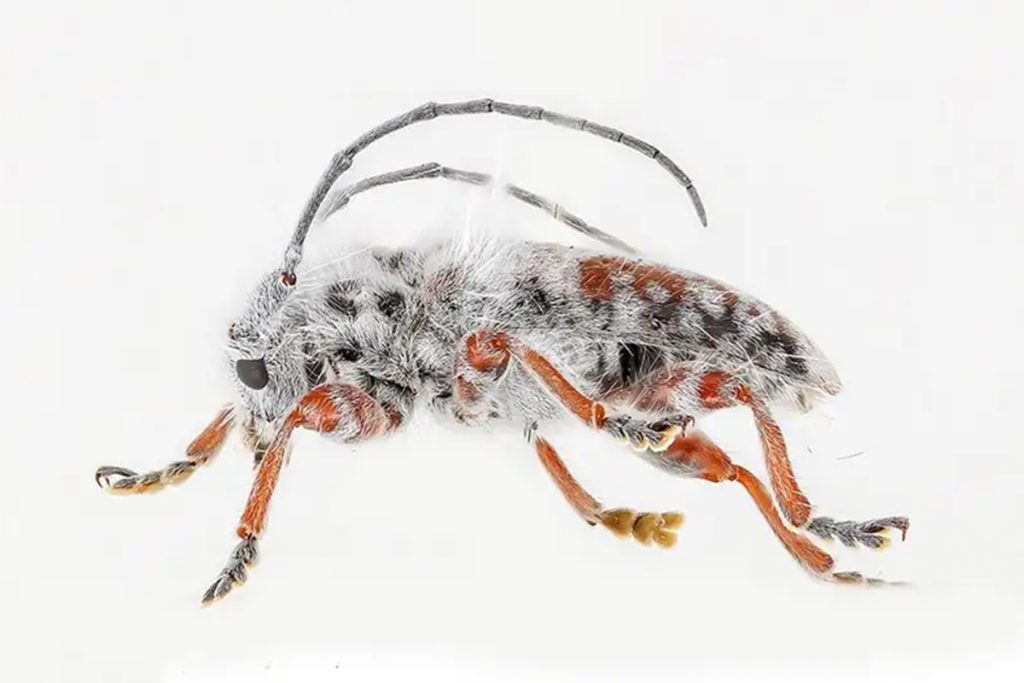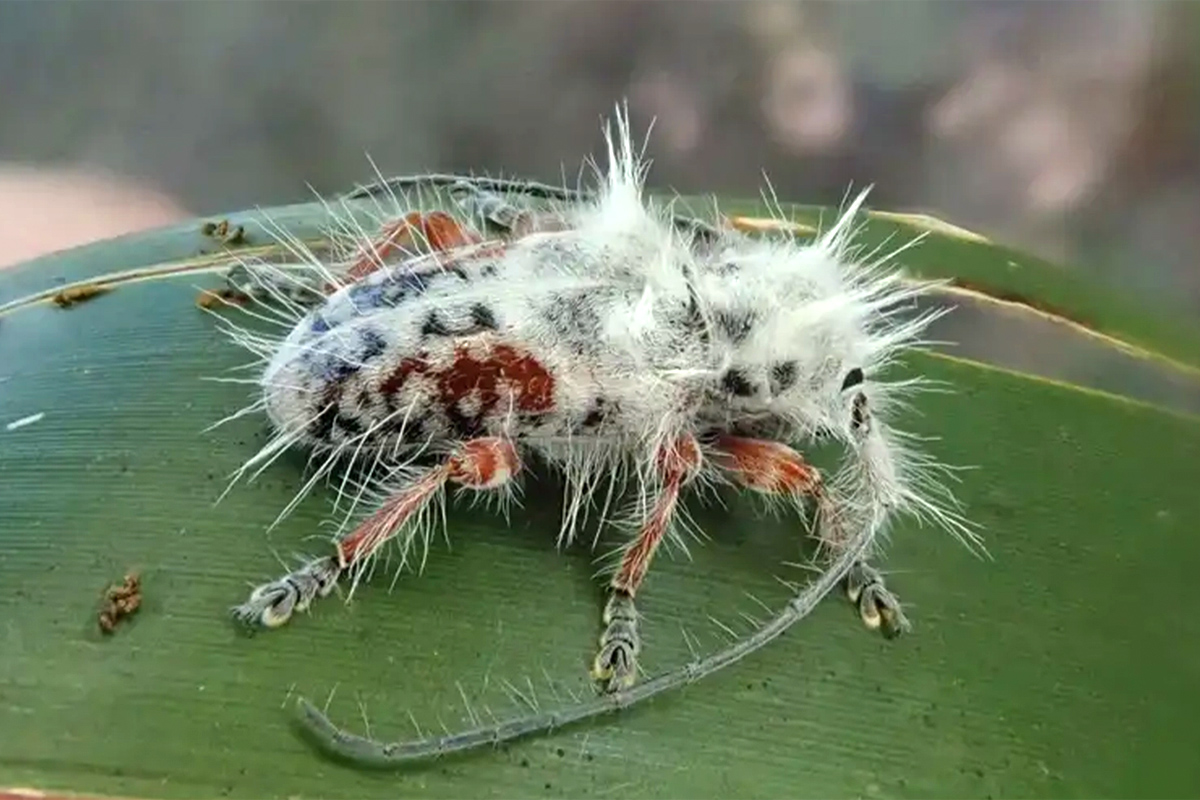An entomologist initially thought the insect was bird poop.
The adjective “fluffy” is not usually one that applies to the billions of bugs that call Earth home. Still, some caterpillars, spiders, and beetles do have longer fuzzy hairs from their many appendages. Now, there is a new genus of fluffy longhorn beetle in Australia that was found by chance and a bit of mistaken identity. The newly discovered Excastra albopilosa (E. albopilosa) is described in a study published March 19 in the Australian Journal of Taxonomy.
Excastra was initially discovered by entomologist James Tweed while he and his partner were camping in the rainforests of Queensland, Australia. He initially thought the less than an inch long critter with its long white and black hairs was a bit of bird poop.
“I was walking through the campsite at Binna Burra Lodge one morning and something on a Lomandra leaf caught my eye,” Tweed said in a statement. “To my amazement, I saw the most extraordinary and fluffiest longhorn beetle I had ever seen.” Tweed is an entomologist at the University of Queensland.

After his trip, Tweed combed through available books, scientific papers, and on the internet to find the name of this species, but his search came up empty. Some photos posted to an Australasian beetles Facebook group sparked some interest, but even the most seasoned insect identifiers were stumped.
The Australian National Insect Collection in Canberra officially confirmed that the beetle was not only a completely new species, but a new genus. They selected the name Excastra for the genus name, which means “from the camp.” Its species name albopilosa means “white and hairy.”
“We don’t yet know what these hairs are for, but our primary theory is that they make the insect look like it’s been killed by an insect-killing fungus,” said Tweed. “This would possibly deter predators such as birds from eating it, but until someone can find more specimens and study this species further, we won’t be able to say for sure why this beetle is so hairy.”
The area where Excastra was located has been popular with entomologists for over a century and Tweed has not seen it on any additional trips back to the park. These types of chance discovered highlight just how many unknown species are out there and how many may risk going extinct. “Insects are the most diverse group of animals on the planet but are also the most underappreciated and understudied,” said Tweed. “Best estimates suggest there may be 5.5 million insect species worldwide and only one-fifth of these have been named and described.”
VIA: popsci.com









